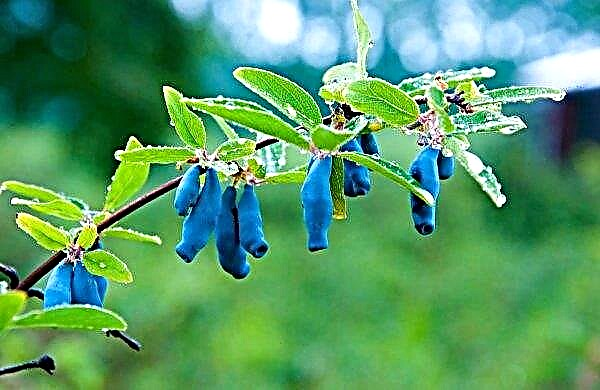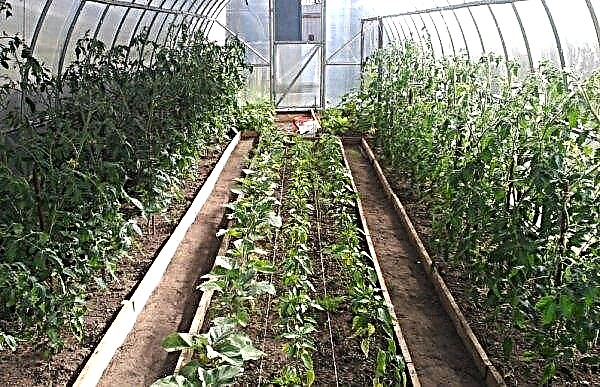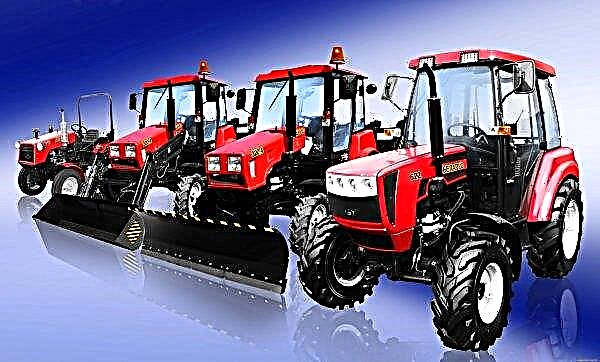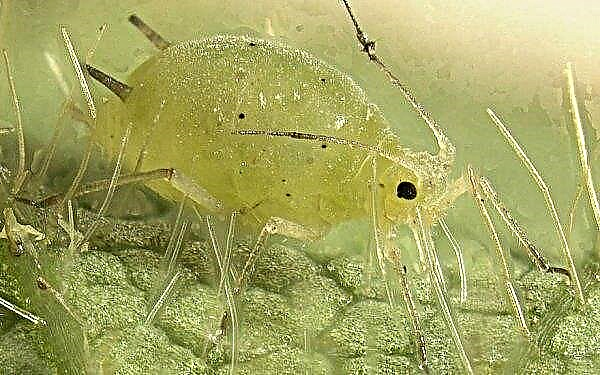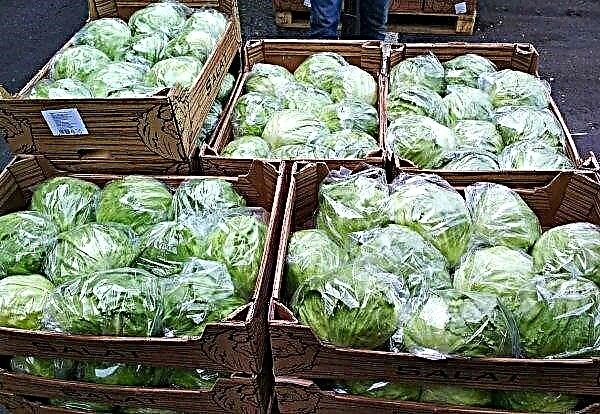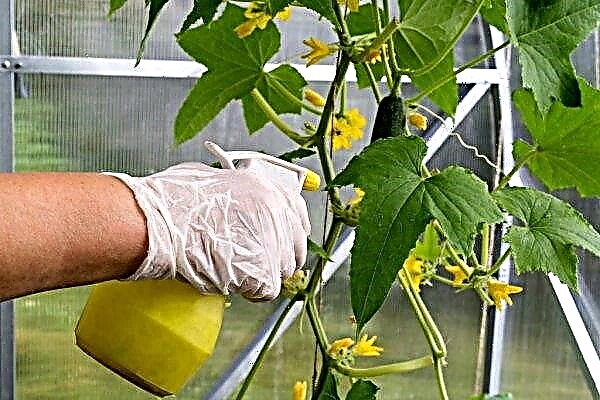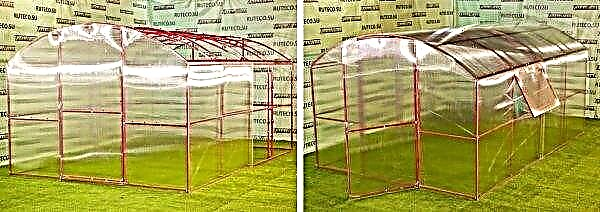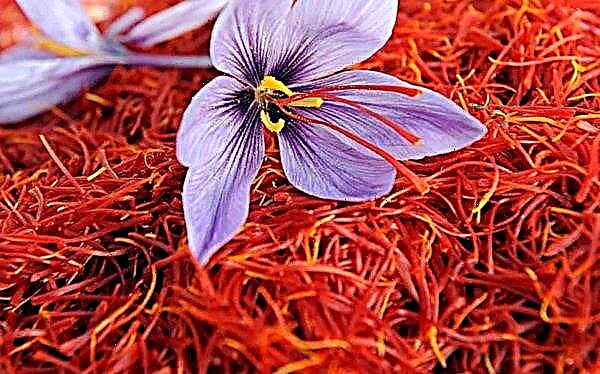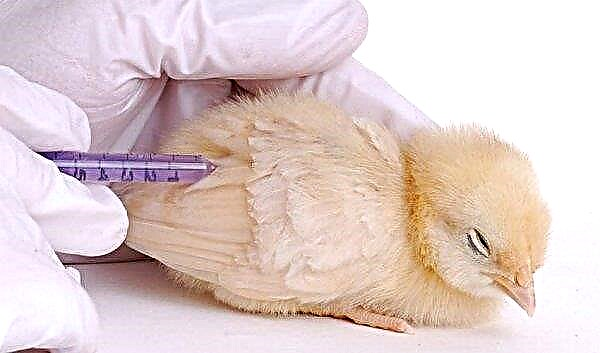Black currant, 50 g of berries which provide a person with a daily norm of vitamin C and a weekly one of vitamin PP, is the focus of many more nutrients, so this berry is listed as healing. And in combination with high gastronomic qualities, she is among the best berries in any garden. But among the best there are the best, such as the Delicates variety, for more details about which read further in the article.
Description of black currant variety Delicatessen
This mid-early ripening berry is characterized by many attractive qualities that allowed it to spread over a wide area with different climatic conditions in a short time.
Selection history
Russian breeders from the All-Russian Research Institute of Plant Production named after O. Vavilova at the Pavlovsk experimental station crossed the blackcurrant varieties Ojebyn and Minai Shmyryov, receiving a promising variety, called them Delicacy. In 2007, it was included in the State Register of the Russian Federation and approved for use in the European part and in the Far East.
Did you know? Most currants are grown in Russia, then Poland and Germany are among the world leaders.
Appearance, characteristics of berries, ripening time, yield
The bush of this currant is distinguished by its height, density and sprawl. It is covered with dark green foliage of medium and large sizes. Delicacy can be easily distinguished by apical leaves, which are funnel-shaped. The flowers, which have an average size and shape in the form of a glass, are painted in pink and raspberry tones.
The ovaries form short brushes consisting of 5–8 future berries. Ripe oval-shaped fruits reach a mass of 0.9–1.1 g, are colored black and are covered with a dense and slightly shiny skin. Tasters taste sour-sweet taste of berries with a subtle smell at 4.9 points out of 5 possible.

| The vitamin composition is diverse, harmonious and consists of: | Macro and microelements are presented: |
|
|
The nutritional value of 100 g of fruits looks like this:
- calorie content - 4 kcal;
- proteins - 1 g;
- fats - 0.4 g;
- carbohydrates - 7.3 g.
In addition, blackcurrant abounds:
- dietary fiber;
- saturated fatty acids;
- unsaturated fatty acids;
- organic acids;
- mono- and disaccharides.

The fruits begin to ripen in the second half of July, continuing this process until early August. The average yield from 1 bush is 12 kg.
Advantages and disadvantages of the variety
- Blackcurrant grade Delicacy is characterized by such positive qualities:
- high gastronomic conditions;
- medium early ripening;
- high productivity;
- good frost resistance, which allows not even covering bushes at a temperature of -20 ° C;
- the ability during collection to demonstrate dry separation from the stem;
- increased resistance to fungal diseases and other berry diseases, as well as to the attack of ticks, aphids, caterpillars.
Specialists did not reveal any noticeable flaws of the variety. Some inconvenience, judging by the descriptions and reviews of gardeners, makes it impossible to get the maximum yield from Delicacy without third-party pollinators.
Did you know? Among 150 types of currants, in addition to the well-known red, black and white flowers, there are also berries of yellow, orange, purple and even green color.
Agricultural technology
Planting currant seedlings in the ground and subsequent care for them does not require excessive effort, but involves pure care, for example, when watering.
Video: How to properly care and plant currants
Seat selection and landing
The main condition that must be observed when choosing a site for planting a blackcurrant plant is illumination. Currants tolerate very poor shading even in the form of partial shade, which leads to the crushing of berries and their loss of black color. This soil is best suited for soil with low acidity and high humidity.
However, it is necessary to carefully observe the water balance, because, not even suffering a short-term drought, blackcurrant at the same time very negatively refers to stagnation of water in the root system. Therefore, when planting it should choose areas where groundwater does not approach the surface of the earth closer than 1 m.
Important! Blackcurrant grows well after a variety of predecessors, with the exception of gooseberries, with which it has common diseases and the same pests.
“Delicious” blackcurrant seedlings are planted either in the spring, immediately after the snow melts, or in the autumn, shortly before the onset of frost. When purchasing seedlings on the market, it is necessary to pay attention not to the number of shoots is not less than 3 and that the roots are white in color and intact in shape. Before planting, it is useful to disinfect the seedlings in a pink solution of potassium permanganate.
The process of planting in the ground at a constant place proceeds as follows:
- A hole up to 0.5 m deep is dug at a selected site.
- In the process of digging a hole, the upper (most fertile) layer is deposited separately from the rest of the soil.
- Half a bucket of compost or humus is poured into the pit and the same amount of earth taken from the top layer is added there. With increased soil acidity, a couple of liter cans of lime are also added to the pit.
- The mixture is mixed in a pit and a low hill is made of it.
- In the center of the hill establish the root system of the seedling.
- Then the pit is first covered with soil from the lower layer, and then with the remaining soil from the upper one.
- Planted seedlings are watered with 1 bucket of water.
- To prevent the rapid evaporation of moisture, the poured soil is mulched with sawdust, chopped peat, dry humus or straw.

Care
As mentioned earlier, currants are very sensitive both to a lack of moisture in the soil, and to its surplus. Depending on the weather, culture is necessary in summer, water so often that the soil around the bush is constantly wet. An exception is the ripening period of berries, when watering must be minimized.
In the spring, during the period when the plant is gaining green mass, it especially needs nitrogen, which is best to saturate the soil by adding organic fertilizers or urea to it. During flowering, the growth and ripening of fruits to a bush to a greater extent requires potassium and phosphorus, which are most often delivered to the soil using potassium sulfate and superphosphate. Fall, while preparing the plant for wintering, it is useful to feed it with potassium, which, while strengthening the immune system, helps the bush successfully withstand low temperatures.

Pest and Disease Control
It has already been said that the blackcurrant variety Delicates has the innate ability to successfully resist most berry diseases and pests. However, in case of violation of the agrotechnical rules of cultivating the crop or in adverse weather conditions in the form of rainy and cold summers, a weakened plant may undergo the following diseases:
- Anthracnose currants and gooseberries, affecting the foliage and leading to its drying out and early fall. To combat this fungal disease, at the very beginning it is necessary to cut off all the affected leaves. When the disease spreads, the bush must be sprayed with a solution of 40 g of copper sulfate, diluted in a bucket of water, or of the same concentration with a solution of copper oxychloride.

- Powdery mildew (spherical library), which affects almost all parts of the currant bush, leading to deformation and drying of shoots, twisting and falling of leaves, shedding of unripe fruits. They fight the disease by spraying the bush with a solution of 300 g of copper sulfate and a bucket of water or 2 tbsp. l bleach and 10 liters of water.

- Curry terry, which is a viral disease, which is manifested by the appearance on the flowers of excessively small and narrow petals and the absence of ovaries. This disease is not treated. Affected bushes must be removed and burned.
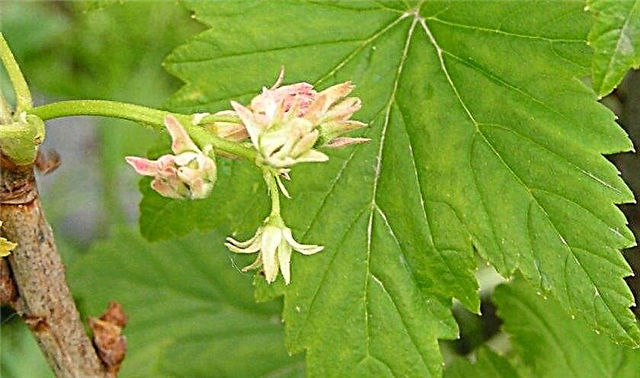
- White spotted currants and gooseberries (Septoria), which leads to curling, drying out and early fall of the foliage. The bushes are treated for this fungal disease in the same way as for anthracnose.

- Ball rust, covering the foliage with spots of orange color, which then causes early fall of the leaves and inhibits the development of the fruit. To combat this fungal disease, a 1% solution of Bordeaux mixture is used, with which the bush is sprayed before the leaves bloom and twice after flowering with an interval of 9 days.
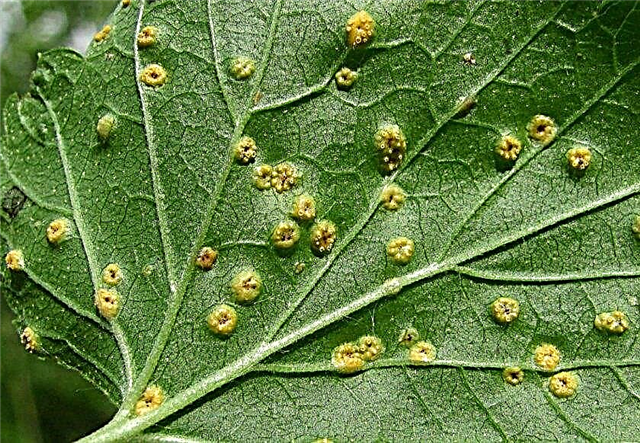
Of the pests, the weakened currant plant is most often attacked:
- Currant leaf gall midge, whose larvae affect leafy buds, due to which the leaves cannot fully unfold and die. With the abundant presence of pests on the bush, it is sprayed with a 3% solution of malathion, repeating the procedure after a week.

- Currant Goldfishwhose larvae eat the core of the shoots, leading to their death. In order to prevent the spread of the pest through the bush, damaged shoots are cut and burned.

- Spider mitesucking nutritious juices from the leaves and causing the foliage to die and fall off. They fight the tick by treating the bushes with Fitaverome or Karbofos.
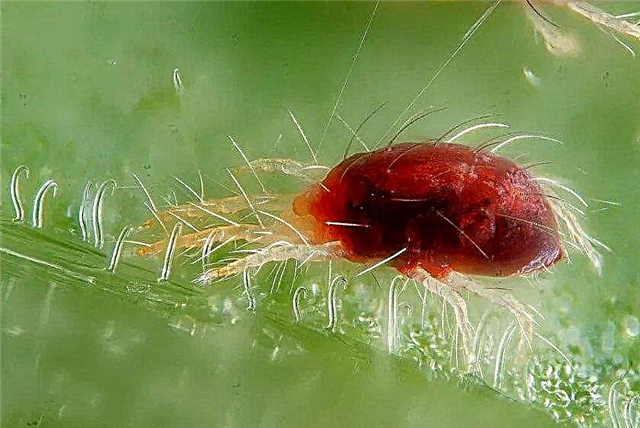
- Currant kidney miteinfecting leaf buds. Fighting him with the destruction of the affected shoots. As a preventive measure, onions and garlic are planted near currant bushes, which repel the pest.

- Currant kidney mothharmful to the kidneys and fruits. To combat it, apply a 10% solution of "Karbofos" or an infusion of 150 g of mustard in a bucket of water.

- Currant Glass Bugwhose caterpillars eat the core of the stems. They are struggling with it through spring treatment of bushes with Fitoverm or Iskra.
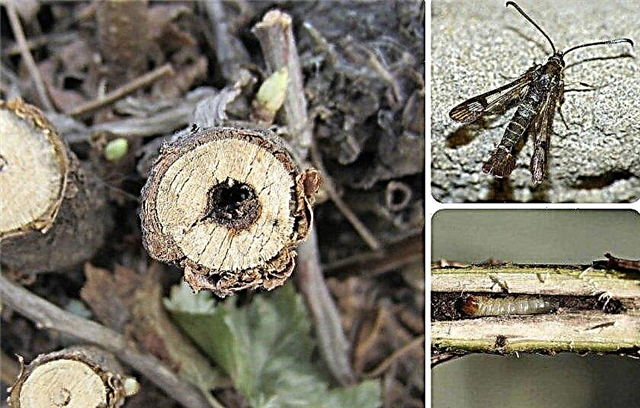
Trimming and shaping a bush
These operations are the most time-consuming and responsible in the process of caring for the currant bush. The importance of trimming is due to:
- the need to stimulate the growth of new basal shoots;
- the requirement to activate branching of root shoots;
- the importance of accelerating the growth of annual shoots on perennial branches;
- the need to prevent excessive bush thickening;
- desire to increase the size of berries.
The first pruning is carried out immediately after planting seedlings in the ground. Cutting off each shoot, leave up to 4 developed buds on it. If during the first year of life the bush is poorly developed, experienced gardeners recommend cutting off all the processes flush with the ground level.
In subsequent years, in order to form a full-fledged bush, all shoots are cut annually, leaving only 4 sufficiently developed and well-oriented. This removes all the weak, affected by diseases and pests, contributing to thickening and incorrectly oriented. Formative pruning ends at the 5th year of the plant's life.
 Fig. 1. Currant pruning: a - annual seedling; b - a biennial bush; c, d - shortening of shoots. Fig. 2. Currant bush before anti-aging pruning (a), after it (b) and pruning of a neglected bush (c)
Fig. 1. Currant pruning: a - annual seedling; b - a biennial bush; c, d - shortening of shoots. Fig. 2. Currant bush before anti-aging pruning (a), after it (b) and pruning of a neglected bush (c)
At the end of the growing season, branches of different ages should be present on a properly formed bush of blackcurrant Delicates, from zero shoots of substitution to fruiting. Preferably, up to 15 skeletal branches of all ages remain on the bush. At the same time, 1-year-old shoots are left for 2 more, and 5-year-olds are as much less.
Wintering
Blackcurrant Delicates variety, able to withstand temperatures up to -20 ° C, does not need shelter in most areas of its cultivation. They only strengthen the immune system with the help of autumn feeding with potash fertilizers and mulch the soil around the bush with crushed peat, dry humus or sawdust.
 In regions with excessively cold winters, it is recommended to cover the shrub with agrofibre.
In regions with excessively cold winters, it is recommended to cover the shrub with agrofibre.
Harvesting and transportation of the crop, shelf life of berries
The willingness of berries to harvest is determined by the degree of blackness of their color. It is preferable to collect fruits in the morning, after the dew disappears, or in the evening, after the heat subsides. Gathering berries in hot or rainy weather noticeably worsens their keeping quality.
Important! In no case should you delay the collection of ripened berries, as their taste can deteriorate and at the same time they easily crumble.
Intended for transportation over long distances, the berries are picked slightly immature and placed in boxes with ventilation holes, or in baskets with a maximum capacity of 6 kg.
Properly picked berries can be stored:
- at room temperature - up to 4 days;
- at a temperature from 0 ° С to + 3 ° С in the refrigerator - up to 40 days;
- in a frozen state - up to 1 year;
- in dried form - 10 months .;
- grated with sugar - up to six months;
- in the form of jam - up to 3 years.

Blackcurrant variety Delicates, justifying its name, was enjoyed by many gardeners. High gastronomic qualities, coupled with unpretentiousness, frost resistance and high yields, allowed this blackcurrant, for a fairly short period of its existence, to find its niche in the berry fields in various climatic zones.












